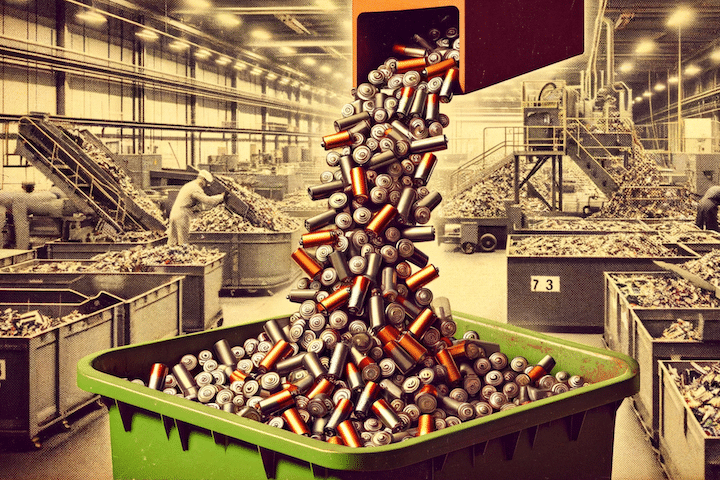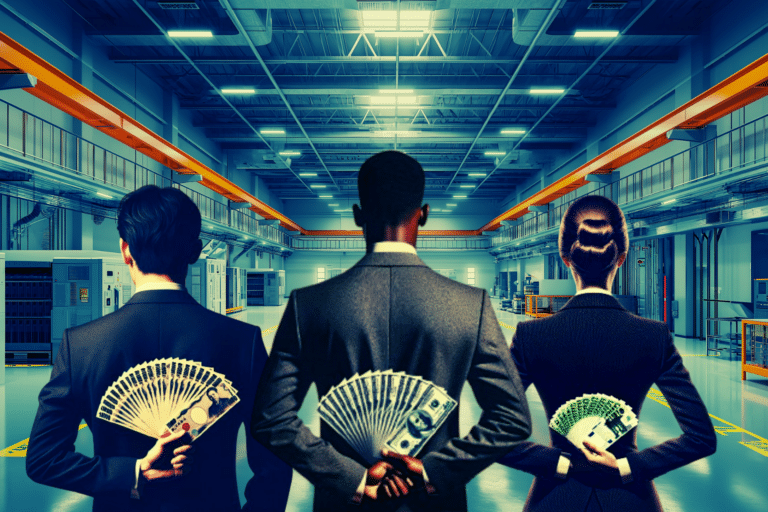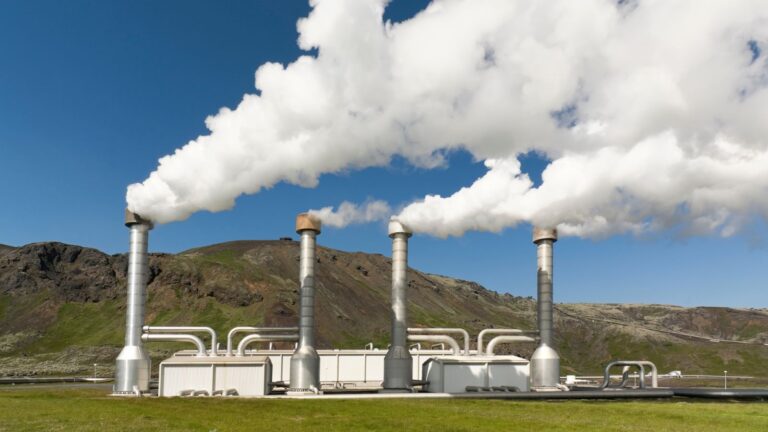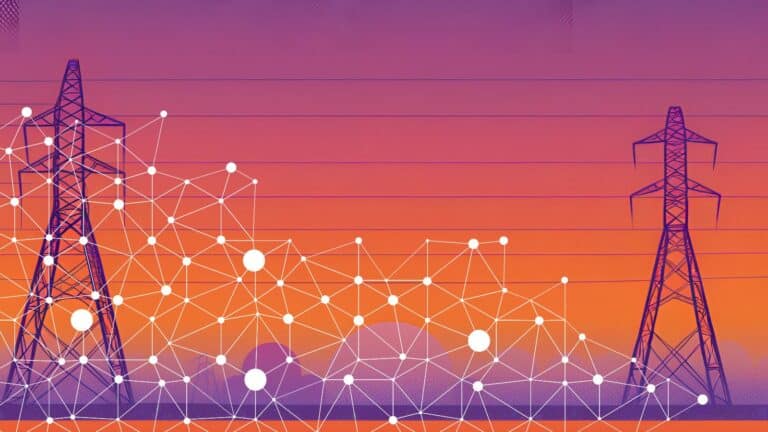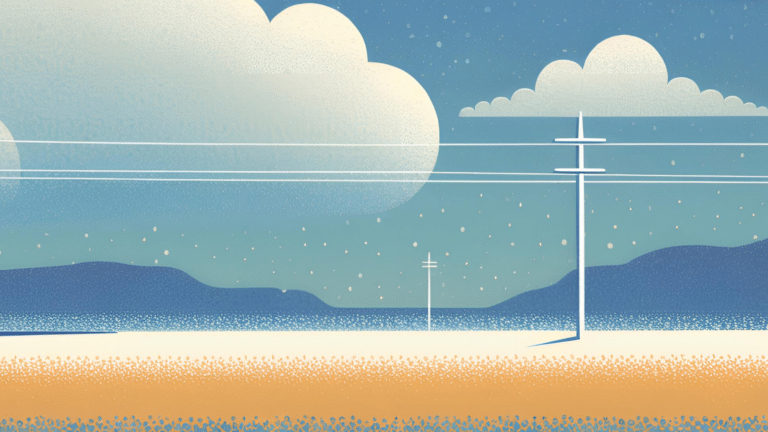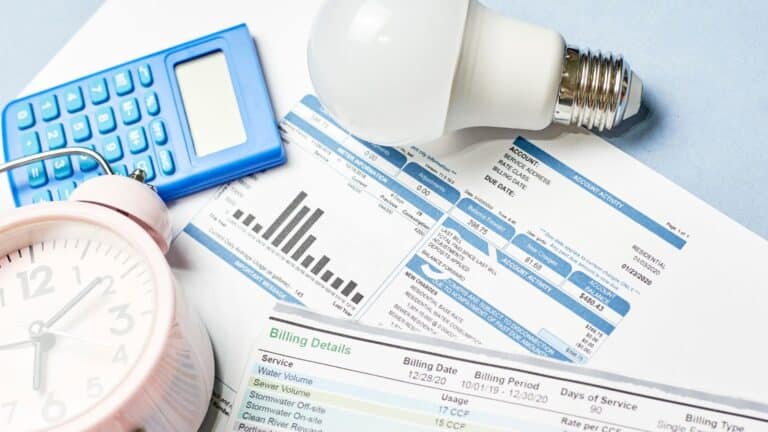Melissa Lott: [00:00:02] DeAndre Upshaw first heard about a company called Griddy through a friend on social media. [00:00:06][4.1]
DeAndre Upshaw: [00:00:07] He had posted about it on Facebook and he was like, You know, it’s this new way to do energy. [00:00:10][3.2]
Melissa Lott: [00:00:11] Now, a lot of us may not go shopping for electricity on Facebook, but DeAndre lives in Texas, a state that has over 100 companies that compete in this open market for retail customers. These are people just like you and me. And when a friend posted about how great Griddy was, well, De’Andre clicked a few buttons and became a customer. [00:00:29][17.2]
DeAndre Upshaw: [00:00:30] The thing that kind of drew me to it wasn’t so much that it was like, Oh, you know, save money on energy, or that I just thought it was cool that it had like a functional website and app like, you know, utility companies are usually really, really boring and really difficult. [00:00:46][16.4]
Melissa Lott: [00:00:47] The transition from his old electricity provider was seamless. Grid’s user interface was modern, and Diandra was able to get this easy to understand data about his electricity usage. It all worked great. That is until Valentine’s Day weekend in February of 2021, when a historic winter storm battered the state. [00:01:06][18.4]
DeAndre Upshaw: [00:01:06] I remember getting an email from Griddy and then being like, Hey, you’re usage is probably going to go up a lot and maybe you should like switch to another service provider. I remember seeing this in like 2:00 in the morning and I remember being like, okay, well, that’s weird. [00:01:19][13.2]
Melissa Lott: [00:01:21] DeAndre hunkered down in his apartment in Dallas, and as he watched nearly 5 million people across Texas lose power, he felt lucky that he had lights and heat, but he still tried to conserve as much energy as possible because at the end of the day, he really didn’t want to get hit with a high energy bill. [00:01:37][16.1]
DeAndre Upshaw: [00:01:37] In my mind, I was like, okay, there’s an initial surge and it might be bad, but we’re not even using electricity right now. We’ve been sitting with the electricity at like 65, barely on. Bundled up like sitting with gloves and hats and under blankets. So how bad could it be? And it was bad. [00:01:55][17.8]
Melissa Lott: [00:02:02] It was bad because the rules governing the Texas grid allowed energy prices to soar during the winter storm as demand rose sharply and there just wasn’t enough supply to go around. And at the very end, these prices. While they made some companies richer and left others bankrupt and people like D’Andre Upshaw found themselves stuck with extremely high electricity bills that just didn’t seem right to them. [00:02:23][21.6]
DeAndre Upshaw: [00:02:25] You don’t have heat for an entire weekend. You don’t have water for an entire weekend. And then they charge you $8,000 for it. Like what kind of tragedies that. [00:02:33][7.7]
Melissa Lott: [00:02:34] This is the big switch, a show about how to rebuild the energy systems that are all around us, how to slow climate change. We need to transform our buildings, homes, cars and the economy as quickly as possible. But how will we do it Right. [00:02:48][14.6]
DeAndre Upshaw: [00:02:52] This is. [00:02:52][0.5]
Melissa Lott: [00:02:56] I’m Dr. Melissa Lott, and I’m the director of research at Columbia University’s Center on Global Energy Policy. And I study the technologies and systems that keep our electric grid running. This is the fifth episode of our five part series on the zero carbon grid. In this installment, the rules. So far we’ve been talking about power plants, transmission and balancing. We could build those systems with the best technologies, but without the proper rules, they may not work for us in the ways we need them to. Throughout this season, we’ve been focusing on Texas as our entry point for imagining the zero carbon grid of the future. Or more specifically, we’ve been looking at the winter storm in February 2021 that brought down power plants and pipelines across the state. That storm left millions without power for days. It caused confusion and misplaced blame over wind and solar. It forced some powerful people who run the grid to leave their jobs, and it almost brought down the electricity system for weeks or months. A lot of the focus was on technologies. But a key question that’s come out of this crisis is about the rules. Could Texas have avoided the whole thing if it had better rules? And if so, what does that tell us about the laws and regulations that will guide us to a low carbon system that will work for everyone? Now, when I say rules or regulations or standards, I’m pretty sure that many of you will start to fidget. But I promise these concepts are important and directly impact you. They determine whether you can put solar on your roof or how much pollution a power plant can put into your community. Or in the case of DeAndre Upshaw. It determines how high your bill can go in a crisis. [00:04:26][90.1]
DeAndre Upshaw: [00:04:27] To give you context for what bill in February March usually looks for us Historically, over the eight years that we’ve been at the same address, 80 or $90 on a bad, bad month around this time. [00:04:38][10.6]
Melissa Lott: [00:04:38] De’Andre didn’t think a lot about his electricity bills because he could always afford them. But in the days that were leading up to the storm, his provider, Griddy, the company that he found on Facebook, told him to go somewhere else, find another provider who had lower rates. And some of you may be like, Wait, what? You can switch electricity providers that fast. Yes, in some states you can. And we’ll explain why a bit later. But in short, the deregulated Texas market means that people can shop around for their electricity company just like they shop for clothing or home gym equipment on Instagram. But it also means that they’re beholden to the market. They see lower prices when power is plentiful, and then they see higher prices when supply is tight. And supplies were super tight as the February storm rolled in. When Griddy warned him about the prices, DeAndre didn’t know exactly how high as Bill would go, but he didn’t think that it would be that much higher than the $90 he normally spent during peak months. But by Sunday evening, in the lead up to the outages, he’d already gotten some eye popping charges on his bill. [00:05:38][59.3]
DeAndre Upshaw: [00:05:38] They’d already charged me $900 directly from my checking account. [00:05:42][3.7]
Melissa Lott: [00:05:43] DeAndre scrambled to protect his finances. He switched his payment method to a maxed out credit card that could decline any additional payments. And then he tried to switch electricity providers. [00:05:51][8.6]
DeAndre Upshaw: [00:05:52] A lot of people are like, Hey, why didn’t you switch earlier? I tried to switch. This is in the middle of a weekend. When I was trying to switch was in the middle of a three day weekend when I was trying to switch. We didn’t have Internet and so I called and I started the process of switching electricity providers, I think Sunday or Saturday, I think early Sunday morning. And I got a confirm switch, but then they just kept delaying the switch. [00:06:16][24.0]
Melissa Lott: [00:06:17] At first they gave him a switch date of Tuesday, then they pushed him back to Wednesday. And in the end, during the worst of the storm, he was stuck with Griddy. Diandra was concerned about the high bills, but he was way more concerned with the health and safety of his friends, people he cared about who were suddenly without power in freezing temperatures. [00:06:32][15.6]
DeAndre Upshaw: [00:06:33] We started to get texts from our friends, like people who live like down the street being like, Hey, our power’s out. Hey, we don’t have water, we don’t have X, Y, Z. And we were like, You guys come directly over here, drive as safely as you can, but come show with us for like the day. We’ve got heat. We’ve got all the things that you need. I remember being like, All right, this electricity may be expensive, but at least, you know, we’re helping people not, you know, to freeze to death. [00:06:59][26.3]
Melissa Lott: [00:07:00] So he and his husband, Stuart, bundled up along with their friends. They kept the heat low and they felt really lucky to be safe in their home. [00:07:07][6.6]
DeAndre Upshaw: [00:07:07] But that he came at a cost and it cost that I was not prepared for. [00:07:12][5.0]
Melissa Lott: [00:07:13] Ultimately, Griddy didn’t switch him to a new provider until the following week, which meant that Andrew’s final bill for the week of the winter storm was astronomically high. [00:07:21][7.8]
DeAndre Upshaw: [00:07:21] Initially it was $900 and it ended up being $8,000. [00:07:23][2.1]
Melissa Lott: [00:07:27] That’s right. $8,000. Diandra was in the middle of looking for jobs. He’d been laid off during the pandemic, and his finances, like most of us, were not in a place to handle this kind of unexpected bill. [00:07:38][10.8]
DeAndre Upshaw: [00:07:39] That would have wiped out every cent within my checking and savings account. I’m just like a regular person who saw an interesting utility company that seemed like they were doing something different. And I bought into it because in the back of my mind I was like, You know, it’s electricity, it’s a utility. It’s something that people need to live. There’s no universe that I could conceive where I would be charged, you know, a thousand times my usual weekly like monthly rate just for a week of usage never crossed my mind. [00:08:10][30.7]
Melissa Lott: [00:08:17] To understand how something like this could happen. We have to understand that it’s not just physics and technology that shape our experience with electricity. It’s the rules that we choose that will determine how clean the electricity is produced, how it gets to us, how reliable it is, and how much it costs to dive into this labyrinth of rules. We’re going to step back and ask a simple question Who manages the grid? [00:08:38][21.2]
Dr. Destenie Nock: [00:08:43] So there are tons of people working every day to manage the great. It’s not just industrial engineers. There’s policy analysts, there’s grid operators that are tracking the generation over time and how it’s being transported across these power lines. [00:08:57][13.9]
Melissa Lott: [00:08:58] This is Dr. Destenie Nock. She’s a professor of civil and environmental engineering at Carnegie Mellon University, and she spends her time thinking about the human side of our technology decisions. How do the rules affect who gets access to clean, reliable and affordable electricity? The answer to this question depends on which grid you’re in. In the U.S., there’s actually three main grids. [00:09:18][20.2]
Dr. Destenie Nock: [00:09:19] There’s the Eastern interconnection, which is going to include all the areas along the Atlantic Coast and a lot of the Midwest. There’s the Western Interconnection, which is looking at the Rocky Mountains, the California area. And then there’s the Electric Reliability Council of Texas, or ERCOT, which covers most of the state of Texas. [00:09:38][19.6]
Melissa Lott: [00:09:39] These three electricity regions are operated by independent system operators known as ISOs and regional transmission organizations known as RTOS. They basically monitor and control how electricity is being delivered across these massive markets. And Destiny has a really delightful way of describing them. [00:09:56][16.8]
Dr. Destenie Nock: [00:09:57] And I would say that these are like the wedding planners of the whole electricity operation. They make sure that the power plants are producing enough electricity to supply everyone’s appliances, their phones, their computers, their refrigerators. Right. They’re making sure people can charge their electric vehicles. Those are really who I think of as managing the grid and making sure that we always have enough electricity supply to meet our demands. [00:10:22][24.9]
Melissa Lott: [00:10:22] You heard her right. These ISOs and autos are like the wedding planners of the grid. They’re the ones who orchestrate all the pieces that we’re talking about in this series generation transmission balancing and making sure that they work together and follow the rules. They don’t make the rules, nor do they actually operate the power plants or power lines themselves as the wedding planner. They’re just following the instructions that are given to them by whoever’s paying for the wedding. In regulated markets, which cover most people in the U.S.. These decision makers or regulators and legislators, they approve the cost for upgrading and running the grid system and approve the prices that utilities charge customers. [00:10:57][34.9]
Dr. Destenie Nock: [00:10:58] So they are the gatekeepers. They’re like the mother that’s paying for the whole wedding. And she’s like, Nope, this is the cap. We’re not paying any more than this for any flowers, any cake, any anything. [00:11:09][10.4]
Melissa Lott: [00:11:09] But in a deregulated market like Texas, the real time market dictates the price the customers pay. [00:11:14][5.1]
Dr. Destenie Nock: [00:11:15] That’s what it’s more like a potluck wedding. And everybody basically is giving you, you know, $1,000 here for your food. Or they’re like, Oh, I’m going to bring the cake and I’m going to cycle and look for the cost of all that cake that I want to pay for. And so in a deregulated market, that’s where different competitors will actually compete to buy and sell electricity. And then you can actually drive the cost a little bit lower in theory, because everybody has to bid in. And if they don’t supply the lowest amount or the cheapest amount, then they’re not actually going to get to supply any electrons. They’re not going to get to make any profit. [00:11:53][37.9]
Melissa Lott: [00:11:54] Well, let’s talk about a specific case that has happened quite recently, and I’m specifically thinking about Texas. Can you help us just to make some general sense of why in those outages, people saw some really high electricity and natural gas bills? Like why was that happening during a blackout. [00:12:10][16.2]
Dr. Destenie Nock: [00:12:11] In our deregulated electricity markets? One of the biggest challenges are these real time prices, because that’s where we’re going to actually see the power plants bidding at different prices that they want to supply electricity at. So as you can imagine, as the supply of electricity decreases over time, then you’re going to see the price that they’re going to offer at really, really high, because they know that they can actually make as much of a profit as possible. I mean, at the end of the day, these are profit driven companies and they want to make sure that they can support their shareholders, that they’re going to pay all their employees as much money as possible. So when you have like a coal plant or an oil plant online as the backup generator, that maybe doesn’t normally get that much profit. Right, especially as we’re moving towards wind and solar or higher renewables, then they’re going to say, look at their watch like, oh, snap, it’s payday. Let’s make sure that we can get as much profit as possible in these few hours to recoup all that other downfall that we had throughout the year where wind was blowing, solar was shining, and they’re like, It’s time to show these people what we’re truly made of and show them our value and they need to pay for that value. And I think that that’s why we saw these incredibly high energy and natural gas bills during the outages in Texas, because, you know, these surge reflect these real time market prices. The market does not care. If these are low income consumers on the grid, it doesn’t care if people don’t have any other option. It just wants to make profit and it’s driven by money. [00:13:52][101.2]
Melissa Lott: [00:13:55] Okay, so let’s recap. Dr. Nick isn’t saying that free electricity markets are inherently bad. Under these rules, electricity, it’s a bit like Uber. You get price spikes when there are a bunch of people who want to ride, but there aren’t enough drivers on the road. And these high prices are meant to incentivize more Uber drivers to come online. The same thing happens with real time electricity rates when prices spike during periods of really high demand. They can help encourage power plants that aren’t operating to fire up. It also incentivizes people to change their behavior, like De’Andre Upshaw did when he turned on the thermostat and switched off some lights. It also means cheap wind and solar power can compete in an open market and push out more expensive fossil fuels. And when prices are really low, consumers see lower prices. But she also said something really important. The deregulated market is supposed to provide cheaper power in theory. But in fact, a Wall Street Journal investigation found that households in substantially deregulated markets paid more for electricity than households and regulated markets, 14% more across Texas, D.C. and 12 other states. And this is because the rules allow competitive retailers to change their rates based on real time market dynamics. They can bury those rate changes in contracts, passing the risk on to customers. And that’s what happened to De’Andre Upshaw and thousands of other customers across Texas. It was the rules with few consumer protections against price spikes that blew this problem out of control. So the rules failed many consumers. They also failed the system. As we’ve highlighted over the last few episodes, Texas power plants were not prepared for the extreme cold. So why weren’t there regulations in place to protect power plants and gas lines? Coal piles and wind blades from freezing in the first place? Texas chose rules that didn’t require utilities to weatherize for this kind of extreme scenario in the winter. Even though the problem has happened before, including in 2014 and in 2011 when I was working at UT-Austin. We know that climate change will make extreme events more frequent. So what will regulators do to make sure that we’re prepared for the next round of storms? [00:15:55][119.4]
Alison Silverstein: [00:16:00] When I go to Washington, D.C. for conferences, I take a very heavy coat. I never need that coat when I live in Austin. And so but my class, it’s full of flip flops and shorts. And so I have designed my wardrobe specific to the weather that I expect to encounter. [00:16:16][16.4]
Melissa Lott: [00:16:17] This is Alison Silverstein. She’s a Texan and an expert on the electricity industry. Having worked at the major utility and regulatory agencies for over two decades. She also knows a thing or two about outages. Back in 2003, 55 million people across the U.S. and Canada lost power in a massive blackout across the Northeast. When it first happened, the cause was a mystery and Allison was one of the lead investigators into the outages. Tasked with figuring out what had happened in this case, the cause had to do with a software bag and utilities control room. Allison thinks a lot about what kind of conditions you need to prepare for. Whether you’re a grid engineer, planning for seasonal extremes, or just someone who’s planning their clothes for inclement weather. Turns out the weather metaphor can actually teach us a lot about the rules of the grid. [00:17:01][44.3]
Alison Silverstein: [00:17:02] And there’s an awful lot of people in Austin who don’t have raincoats because it doesn’t rain much. So I have done my coat buying or my shoe buying based on my expectations of routine weather that I’m going to experience. The people who designed a power plant outside Austin don’t put the equivalent of a winter coat. Around their coal pile, like to protect it from rain or ice and they don’t put insulation around many of the pieces of the power plant that are reasonable to do for a plant up north that’s going to see cold weather all the time, because a lot of the measures that you do to, quote, winterize a power plant here in Texas for hot weather are going to make it less efficient to operate in the summer when we’re used to needing it desperately. So similarly, think of when we look at whether these are reasonable choices by power plant owners. I’m not trying to give them an excuse for any reason for not performing. When it was super cold, they had plenty of warning that this cold weather was coming. There were more things that they could have done to make sure the power plants were there. [00:18:09][67.4]
Melissa Lott: [00:18:10] So we’re talking about the coat, and it’s when I’m thinking about the grid, like who gets to decide whether or not a power plant has to have a coat or it can just run around in flip flops and shorts and not care about the consequences. Like who’s making I’m saying no. Like I say to my kid, like, No, you need to wear a coat. It’s cold outside. You’re going to get sick and it’s going to be a problem. Like, who decides that and how do they decide that? [00:18:33][23.5]
Alison Silverstein: [00:18:34] There are three kinds of people who make decisions about what power companies and generators do. Those are state and federal legislators. A lot of laws don’t ever touch on this kind of thing. So they’re very generic and they’ll say something like, Regulators go tell the power plant industry to be reliable. Oh, okay. Thanks. We’ll go do that. Want to give me more hints? No. Okay. I guess it’s up to us. And then the next level is state and federal regulators. Those are like state public utility commissions and the Federal Energy Regulatory Commission. And then there are industry entities, the North American Electric Reliability Council, which sets reliability rules for the U.S. and Canada. And the regional transmission operators are independent system operators who are sort of the high level entities that actually coordinate grid operation across most of the nation. [00:19:31][57.1]
Melissa Lott: [00:19:32] So we’ve got a lot of players in this. We got a lot of people involved in making the rules. So when I think of a relay race, okay, so the person who starts that, the policymakers and legislatures, they take the baton through the first 100 yards and they say, great, okay, pass it off to the regulators, who then set more specific rules, who then pass it off to utilities and say, okay, now meet those rules. Does that make sense? Talk me through what your relay race looks like. Who’s at each leg of it? [00:19:55][23.2]
Alison Silverstein: [00:19:56] So leg, one of your relay races. That’s a good one as your legislators. Mm hmm. And they are dealing with, you know, a pretty standard baton. When the legislators are going down the track. There are only a handful of people on the sides of the track trying to get involved in the race. When the regulators take the next leg of the relay, they are trying to turn that baton from something that’s like a rolled up piece of paper into a book full of rules. And there are for every person who showed up to be involved in the development of that legislation, there are now 20 times that number of people who are busy trying to tell the commission how to run this race. No, no, go to the left, go to the right, Run faster, run slower. [00:20:46][50.3]
Melissa Lott: [00:20:47] Look at that. [00:20:48][0.3]
Alison Silverstein: [00:20:48] Guy over there. So so they’re making it much more complicated before they produce the book version of what the legislature handed them on the rolled up piece of paper baton. And when they finish this and they hand this book to the companies to implement, everybody goes out and they turn what was done there into policy. [00:21:09][21.2]
Melissa Lott: [00:21:10] When this process works, it works pretty well. But in any political arena, some of the people involved may be more focused on short term gains rather than long term benefits, or the players that have been in the game a long time. They want to remain on top even as conditions change around them. Or sometimes it’s just inertia. We’re used to doing things in a certain way, so why change? In Texas, it was kind of a combination of the three. Even after deep freezers knocked out big chunks of the state’s grid multiple times in the last decade. The rule makers, that’s the legislators and the regulators, they failed to address the problem. And this feeds into a deeper problem. Across the US, the rules of the grid are often written for the weather and technology conditions of yesterday, not the conditions that we see today, much less the changes that we will see in the future. [00:21:56][45.6]
Alison Silverstein: [00:21:57] We designed this grid looking in the rearview mirror much as I went out and bought flip flops and shorts instead of winter coats. We designed this grid for Ozzie and Harriet weather and we are facing Mad Max because of all of the extreme weather and heat associated with climate change and varying conditions and threats. The grid that we have today is not ready to deal with the. Fiercer hurricanes, the more violent flooding and precipitation events, the kind of polar vortex coming in into Texas in ways that it has done before, but never this cold this long, this big. So we need to completely redesign and rethink our energy systems on a forward looking basis instead of on a backward looking basis, historical basis. We know what needs to be done. Some of us do. Most of us do. We don’t have that enshrined in policy requirements yet because again, most of the industry has been backward looking, looked at what history and probability of past weather events and reliability needs are. And most of the reliability rules have been reactive rather than proactive. This bad thing happened. How do I need to change grid operations and grid design to be able to address it going forward? And because the grid and the ways that it breaks have become more and more creative and disastrous. And the good news is we don’t always make the same mistakes. The bad news is sometimes we have new mistakes that we make. The bad news is, yes, we’re still making too many the old mistakes. We knew that bad weather. And in terms of the level of ice and cold and gas and electric system failures could hit Texas, They’ve done it two or three or four or five times before. We know how to protect power plants against that. We chose not to do it. So, you know, fool me once. Bad weather. Shame on you. Fool me twice. Shame on me. Shame on us in Texas for having experienced bad weather, arctic weather multiple times and not responded to it because we didn’t want to spend the money or didn’t want to recognize the threat. [00:24:19][142.4]
Melissa Lott: [00:24:25] These decisions about not creating rules for weatherizing power plants. They have an impact on generation, but they also impact people and not in equal ways. We know that the Texas outages caused more problems for people who were already struggling, and according to research from the Rockefeller Foundation, minority neighborhoods were four times more likely to experience a blackout during the February freeze. These also tend to be less wealthy areas. The impacts of a power outage, like a burst pipe that floods your apartment or your inability to get to work, they can be devastating for people who are economically insecure. And Episode four You heard us talking with Dr. Al Dakolo about using distributed resources like rooftop solar batteries and electric cars in order to better balance the grid during periods of stress. This future is unfolding right now, and so are the rules for how these technologies play in the market and who gets access to them. As we create new rules for the power grid that allows distributed dynamic and net zero grid to unfold. How do we do it in the most equitable way possible? For that, we turn back to Dr. Destiny Nock. [00:25:29][63.9]
Dr. Destenie Nock: [00:25:36] So typically right now we see that the majority of people who have rooftop solar and batteries on their homes are those single family homeowners. Right? They’re the ones that own their roofs. They’re the ones that live in their own home. And they’re also, you know, on the more wealthier side because they’re able to front the bill for those upfront solar costs. And I think that typically who’s not able to buy these are going to be the renter populations, right? Like they don’t own their rooves and they’re really at the mercy of their landlords about whether or not they’re going to invest in those technologies. Anybody who lives in an apartment complex or even in a townhome with a homeowner’s association, they’re not able to change the outside structure on their homes. And so that really does limit the uptake of rooftop solar. I think a lot of people talk about the costs of solar, but we’ve seen solar costs fall dramatically over the last 15 years, and I think that it will continue to fall as we deploy more and more rooftop solar. But now we have to think about how do we get over these infrastructure hurdles, right. And how can we actually accommodate people who don’t own their roofs, who don’t own their own homes, but want to still play a role in this clean energy future? [00:26:55][79.0]
Melissa Lott: [00:26:56] So what would it look like in the future for us to have equitable access to like widespread use of solar and batteries? Like, what would that be like when you picture that in your head, what does it look like and how do we get there in terms of setting up the rules of the road so that that works out and we get to that kind of a future that you’re picturing? [00:27:13][17.1]
Dr. Destenie Nock: [00:27:14] So I think that wide scale access for solar home systems would really be more on the utility side of things, and it’s going to be more community solar as well so that you are not encumbered by whether or not you own your roof. So let’s just assume that we did widespread rooftop solar in the current in the current state, right? Then that means that everybody who owns their roof, who owns their home, is going to adopt solar. And we just basically forget about everybody else who doesn’t. And then you have to ask yourself, okay, well, if 50% of the United States jumps off the grid to rooftop solar, what happens to the other 50% of people? Right. And I think the reason why I say we have to think about those other 50% is because the way that we pay for electricity right now is based on the amount of electrons that you use. So if you are using, let’s say, 100 kilowatt hours in one day to, you know, watch TV, do all your videos and all this other stuff, then when you adopt a solar panel, then all of that, and now you cut it down to 50 kilowatt hours a day. And that’s going to affect the economic viability and the profits of the natural gas plants, the coal plants, the oil plants that are really just fighting to stay on line. So maybe now they’ve gone out of business, they’ve gone bankrupt, and now they’re like, oh, boo hoo, like clean energy like you want, right? But then, you know, so now we have this other 50% of people who are really making sure that the grid is still operating because the solar panel people are only going to pay for their electrons when they need the backup power from the grid. We still have all these transmission lines and wires that somebody has to pay for, and you use those things regardless of how many electrons you’re using throughout the day. So at the end of the day, if a truck hits a telephone line and it goes down and you see your transmission part on your electricity bill rise, you know, for one month to cover those extra costs of replacing all those power lines, then that’s not going to be just on the amount of electrons that you use. Everybody with backup power should also help you pay for that. But that’s just not how our prices are structured at this moment. [00:29:33][138.7]
Melissa Lott: [00:29:34] I think the overall statistics for the U.S., something like one in eight Americans are food insecure and one in three are energy insecure. And this in security number, it’s not just that I’m paying a lot of my income for my electricity and my gas and my water. It’s actually I am putting myself in an unhealthy situation to keep those bills low. So it captures that how many people are just not using their air conditioner, even though it is 90 plus degrees outside and their house is hot. And it’s it’s an important thing we capture. And when I think about the net zero future, I mean, these are the stakes we’re talking about, right? These are just examples of the stakes. And I’m wondering, when you think about the net zero future for the grid, what are kind of the best and worst case scenarios that you see when it comes to inequity, when it comes to insecurity? [00:30:20][46.0]
Dr. Destenie Nock: [00:30:21] So when I’m thinking about the future of the grid, I would say that the. Best case scenario is that you can live anywhere and still have the same air quality, the same water quality. Right. You don’t have to worry about living in one of these environmental waste zones just to hike, have a cheap house. Right. And then no matter where you live, you can afford a reliable electricity service. Ryan When I say a reliable electricity service, there is a worry that as we move forward in the grid, that you could actually charge people for different reliability levels. Right. So if you are a low income person, maybe you would be willing to save even more money electricity bill by paying for a lower quality. So a lower quality electricity might burn out your appliances easier. That’s if your cell phone or your computer is running hot. That means it’s not at the right frequency. And then you would get this cheaper service, right. And on average, that would probably be fine. But then you run the risk of if something bad happens, then you might be the first one to get cut off. Now, in Texas, we’ve already seen there are some reports saying that low income populations were the first ones to get cut off the grid anyway. And so the worst case scenario is that that just keeps happening. Right. The worst in the worst case scenario of this net zero future. We see that adding renewable energy to the grid increases the costs of everybody who’s stuck on the grid. And when we’re thinking about who’s stuck on the grid, right, those are the renter populations. Those are people that don’t own the roofs that they live under. So people in apartment complexes, often they might be at risk for paying these higher electricity bills because as we deploy more and more rooftop solar, typically the people adopting those are single family or single family homeowners. [00:32:15][114.6]
Melissa Lott: [00:32:19] And when you think about the grid of the future, what are you hopeful for? [00:32:21][2.6]
Dr. Destenie Nock: [00:32:22] I would say when I think of the grid of the future, I’m hopeful for one, that reduces the burden on marginalized and vulnerable communities and creates jobs not just for people that currently have them, but for anybody that wants them, because we want to make sure that people can, one, afford the electricity. And a part of that. Affordability comes from a low cost electricity system, but also having a job that will pay you enough money to afford that electricity in your house. As we tie more and more things to electricity, we need to understand that it’s a basic need. It’s a social justice issue. [00:33:03][40.8]
Melissa Lott: [00:33:14] Across this entire season, we’ve been exploring trade offs and with every rule that we create, someone will benefit and someone will lose out. So we need to make sure that as many people as possible will benefit from the net zero grid, that our rules reflect the importance of reliable and affordable electricity to our health and our economy, and that our rules make sure that we can keep the lights on and stay safe in our homes. This is already important today, but as we discuss throughout the season, as we use electricity for more and more things in the future, the reliability of our grid only becomes more vital to our economy and personal well-being. It can all feel a little abstract, but there are ways that you can directly impact the outcome. We can make choices to be more efficient and flexible. On the demand side, signing up for these programs where we get paid to change our electricity usage when the grid is under stress, to give our grid operators another tool in the toolbox. And if those programs don’t exist in our local area, we can demand them. We can ask our utilities to invest in community projects like community solar and storage, and we can ask our regulators to promote more rooftop solar. And we can tell our legislators that the grid is important to us, that it’s important to our future, that it’s the key to solving climate change and reducing harmful air pollution, and that we want the rules of the road to reflect how vital electricity is and how important it is to make sure that everyone can benefit homeowners and renters. High and low income minority, a majority, every single one of us. These are just some of the many ways that we can get involved. And to be clear, if we, the public, don’t get involved with the decisions, someone else will make them for us. Decisions like what do we care about? What are our priorities? How much risk are we willing to bear? And who’s going to pay the cost when something goes wrong? It’s clear that it’s not enough for us to focus on the technologies that are going to get us to net zero. We also have to focus on the rules. And for De’Andre Upshaw, who was hit with massive bills despite trying to switch away from real time energy rates. He took his electricity provider Griddy to court. [00:35:23][128.8]
DeAndre Upshaw: [00:35:24] They were able to get $900 to my checking account, which I plan on getting back. There’s a class action lawsuit that a lot of us are part of. [00:35:31][7.7]
Melissa Lott: [00:35:32] But even if De’Andre and others are able to get their money back, it doesn’t solve the larger problem, which is that the rules need to change to not only support a rapid shift to a zero carbon grid, but also to make sure that our larger energy system, our homes, our cars, our natural gas systems, our electricity infrastructure, all of it is ready to handle a changing climate. [00:35:51][18.7]
DeAndre Upshaw: [00:35:51] The problem for me is that this occurred. This could have been prevented. In 2011, we had a similar type of storm where things were bad and the people in charge were told that they needed to invest in making this safer and better for the people of Texas, and they did absolutely nothing. I think what is super evident to me and what is super apparent to most people who have sense is that the climate is changing and we need to respond to how the climate is changing. [00:36:24][33.0]
Melissa Lott: [00:36:28] And that’s the end of our five part series on the net zero grid. If you skipped any episodes, go back and listen and tell us what you think. We will be so grateful if you can give us a rating and review on Apple Podcasts. And if you think that this show would be valuable to a colleague, a friend, or in a classroom, please share it. Put it on social media, send him a link, or just tell them to pick up their phone right in front of you and hit subscribe and stay subscribed. We’ll be coming out with more episodes later in the year and we’re going to focus on other parts of the energy system, such as transportation, shipping, heavy industry and other parts of the economy. Because in order to slow climate change, we need to transform not just our buildings but our homes, our cars and the economy as quickly as possible. And we need to do it right. The big switch is produced by Columbia University’s Center on Global Energy Policy, in partnership with Post-Script Media. Our producers are Daniel Waldorf and Alvin Aboyeji. And a special thanks goes to Kirstin Smith, Jenna martin, Attilio Julliard and Q Lee. Our executive editor is Steven Lacy. I’m Dr. Melissa Lott, and this is the big switch. [00:36:28][0.0]
[2076.5]



